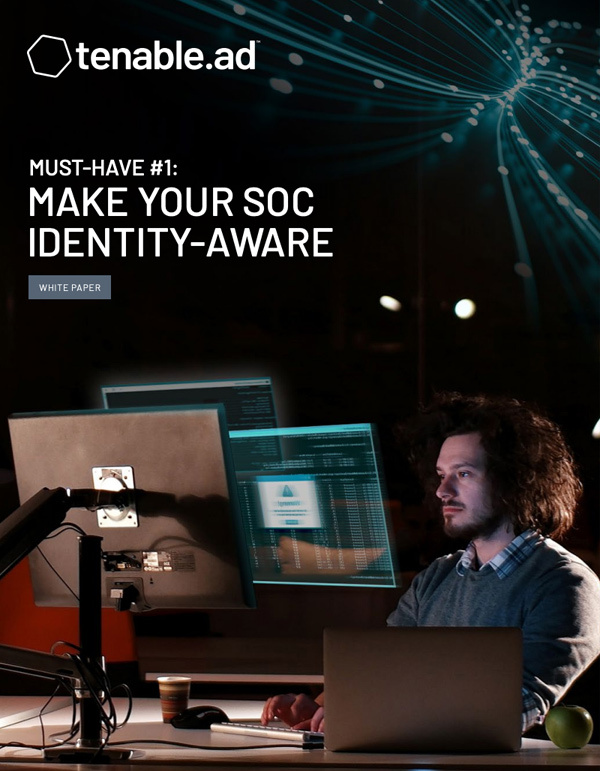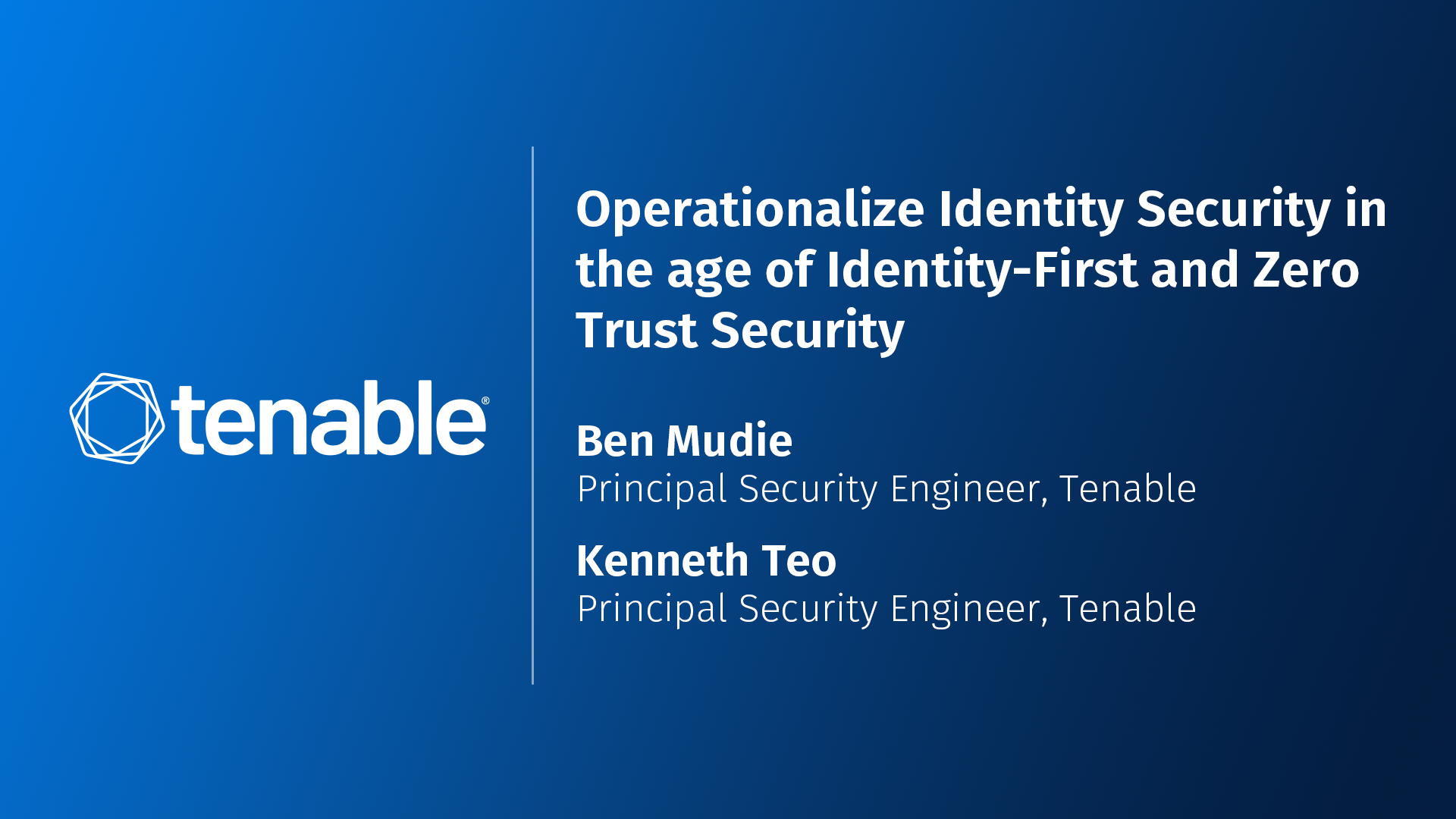What is a Security Operations Center (SOC)?
Understanding the Security Operations Center (SOC)
Cyber risks exist in every corner of an expanding attack surface. Bad actors know that the more extensive operations, the more likely there will be unmitigated vulnerabilities, misconfigurations and other security issues security teams don’t have the time or insight to handle. They’re banking on it, ready to strike at any moment. Some larger organizations respond by developing their own in-house security operations centers (SOC), while others choose to outsource SOC operations to cybersecurity industry experts like a managed security services provider (MSSP) or a managed detection and response (MDR) provider. Think of a SOC as a central hub where all proactive and reactive cyber defenses live. It’s the nerve center of cybersecurity operations. This SOC resource takes a deep dive into what a SOC is, how a security operations center as a service (SOCaaS) works and how applying the knowledge of cybersecurity and industry professionals into a center can better defend enterprises of all sizes from cyberattacks.
Here's what’s covered:

What is a Security Operations Center (SOC)?
Take a deep dive into what a SOC is and how it can proactively defend against cyberattacks.
Learn MoreMature SOC Processes Begin in AD
Learn how to better protect the modern attack surface with Active Directory (AD) security.
Learn MoreThe Missing Piece in an Effective SOC
Find out more about one of the most commonly overlooked exposures that can impact a SOC.
Learn MoreTenable Connect community
Join the Tenable Connect community to engage with other cybersecurity professionals interested in SOCs.
Learn MoreSecurity Operations Center FAQ
Have questions about security operations centers and how to make them more effective? Check out this FAQ.
Learn MoreSecurity Operations Center Frameworks
Cybersecurity, risk management and compliance frameworks can improve SOC efficiency.
Learn MoreMake Your SOC Identity-Aware and Efficient
Learn how to identify and mitigate cyber risks before cyberattackers exploit them.
Learn MoreInvestigate and Prioritize Critical Assets and Vulnerabilities
See how Tenable One can help SOC teams focus efforts on risk that matters most to prevent likely attacks.
Learn MoreWhat is a Security Operations Center (SOC)?
At its core, a security operations center is the central hub where a highly specialized team of professionals works around the clock to detect, investigate, mitigate and thwart cyberattacks. SOCs use cutting-edge technology, intricate processes and the collective wisdom of industry experts to defend against cyber threats.
Many organizations have disparate security tools and siloed IT, security, and compliance teams, each focused on individual goals that often miss exposures across an attack surface. The more assets an organization adds (for example, more apps, more cloud services, more laptops, tablets and smartphones), the harder it is to identify all cyber risks, let alone find time to prioritize which ones might have the most significant impact and mitigate them.
SOC centralizes around-the-clock risk identification, threat detection and incident response. Some examples of activities within a SOC include monitoring network traffic, analyzing log data and actively seeking breach signals.
When SOC analysts uncover cybersecurity threats, for example, through penetration testing, they leap into action, identifying the nature and scope of the threat, containing it and swiftly responding to minimize damage. SOCs also conduct post-incident analysis to learn from each event and continually enhance cyber resilience.
Overseeing identity and access management systems involves IT and security operations professionals, risk, compliance and governance.
— 2023 survey by Forrester Consulting on behalf of Tenable
SOC professionals are highly trained in cybersecurity. They have a range of unique skills and a deep understanding of threats. Some examples of SOC professionals are security analysts, incident responders, threat hunters and security engineers. They work together to stop attacks and proactively identify security issues to stay one step ahead of cybercriminals.
Organizations of all sizes can benefit from SOC services, but exactly what each SOC consists of depends on factors like organization size, location, industry, asset type and volume, as well as data type. Some organizations manage SOCs on-prem, while others outsource to specialized cybersecurity teams. The SOC as a Service market is growing, expected to exceed $11 billion by 2028.
While some SOCs manage all aspects of cybersecurity, some are extensions of existing cybersecurity operations. Both unify security efforts and work closely with other departments such as IT, compliance and legal. SOCs also help align security measures with business objectives, compliance and regulatory requirements.
Although centralized, SOCs are not stagnant. They constantly evolve to keep up with a changing threat landscape, update training and education and use the latest cybersecurity tools, research, resources and strategies.
Get Comprehensive Visibility Across IT, Security and Compliance
Quickly identify, investigate and prioritize critical assets and vulnerabilities to measure and analyze security and compliance risks with Tenable One.
Make Your SOC Identity-Aware
SOC teams are at the frontlines protecting attack surfaces from possible breaches. Yet, as the modern attack surface expands and becomes more complex, it’s difficult for teams to identify assets and prioritize vulnerability remediation to stay a step ahead of attackers. That’s especially true as threat actors continue to aggressively attack Active Directory (AD), hoping to find exposures to infiltrate systems and elude detection through common gaps in security information and event management (SIEM) systems.
Although SIEMs are important SOC tools, they were never designed for AD security. As a result, security teams have poor visibility into active threats, delayed breach response, undetected live attacks and overworked security analysts.
Download this white paper to learn more about:
- Common challenges SIEMS create
- How to bolster security defenses and SOC efficiency
- How to identify and close common SIEM gaps

SOC Insights
The Missing Piece in an Effective SOC
While many SOC teams successfully use SIEM solutions to monitor network risk, they often miss a door many organizations leave open for cyberattackers — Active Directory (AD). The AD attack surface is expanding and SOC teams can’t overlook the importance of AD security. SOCs that use an AD-focused security solution are better poised to manage AD security complexities.
This in-depth infographic outlines a four-point checklist to help SOC teams select a pre-SIEM solution to protect and defend AD from cyber threats.
3 Real-World Challenges Cybersecurity Organizations Face
As modern attack surfaces become more complex and interconnect more systems and users, many security teams struggle to keep up with all the data that comes in from all of their security and IT systems. They’re searching for vulnerabilities, looking at cloud configurations, web applications, identity systems and more. It’s nearly impossible to effectively analyze all that data, let alone prioritize what needs attention first because it poses an actual risk.
Implementing an exposure management program can help SOC teams better allocate time and resources to focus on actions that reduce cyber risk. In this guide, learn more about three real-world challenges facing modern cybersecurity organizations and how to overcome them, including insight on building and implementing an exposure management platform for your organization and/or the organizations your SOC manages.
Tenable Connect community: Your go-to SOC resource
If you have questions about security operations centers, join the Tenable Connect community to engage with others with similar interests in learning more.
What are the options to show a dashboard in a SOC environment?
We have a lot of LCD screens with all kinds of operational information and we want to have a dashboard on a big screen to show the security state of our environment.
Read MoreReports of Unconfirmed Zero-Day in Microsoft Exchange Server Exploited in the Wild
GTSC Cybersecurity Technology Company Limited published a blog post (English translation published) regarding their discovery of an unconfirmed zero-day vulnerability in Microsoft Exchange Server.
Read MoreCloud Leaders Sound Off on Key Challenges
Most cloud decision-makers surveyed wear multiple hats, identifying themselves as the final decision-makers for several other critical areas, including DevSecOps, vulnerability management and even the security operations center (SOC).
Read MoreFrequently Asked Questions about SOCs
Do you have questions about security operations centers but not sure where to start? Check out these frequently asked questions.
What is a security operations center (SOC)?
A security operations center (SOC) monitors, detects and responds to cybersecurity threats and incidents. It combines people, processes and technology to protect and defend digital assets and attack surfaces.
What is a managed SOC?
A managed SOC, or SOC as a Service (SOCaaS), is a cybersecurity solution where a third party provides 24/7 monitoring, threat detection, incident response and security infrastructure management, which frees up in-house resources for more comprehensive protection.
What is a virtual SOC?
A virtual SOC operates remotely, using cloud-based tools and remote access technologies to monitor and secure networks and systems.
What is a distributed SOC?
In a distributed SOC, multiple locations are responsible for security. Each site may have SOC capabilities, but they collaborate and share information to strengthen cybersecurity posture.
What is a dedicated SOC?
A dedicated SOC exclusively focuses on security for one organization. It is staffed and equipped to monitor and protect all assets with a best-practice cybersecurity approach.
What is a command SOC?
A command SOC is an advanced SOC for large enterprises or critical infrastructure. It integrates security functions with centralized command and control capabilities to coordinate cyber threat response.
What is SOC as a Service (SOCaaS)?
SOC as a Service (SOCaaS) is a cybersecurity service that manages SOC capabilities, security monitoring, threat detection and incident response.
What does a security operations center do?
A security operations center monitors networks and systems, identifies suspicious activities or security breaches, investigates incidents and responds quickly to mitigate threats.
What types of security operation centers are there?
Some types of SOCs include in-house, managed (SOCaaS), virtual, distributed, dedicated and command. These meet different needs and operational purposes.
What are the key components of a security operations center?
Key components of a SOC include skilled analysts, advanced cybersecurity tools, incident response procedures, threat intelligence, monitoring and logging dashboards and coordinated communication.
What are some SOC capabilities?
Some SOC capabilities include continuous monitoring, threat detection, incident analysis, incident response, vulnerability management, threat intelligence integration and security awareness training.
Who needs a security operations center?
A SOC can benefit organizations of all sizes and industries by safeguarding assets, protecting data and maintaining business continuity.
Why do I need a security operations center?
A SOC proactively responds to cybersecurity threats by identifying cyber risk, decreasing the chance of data breaches, financial loss, operational disruptions and reputational damage and creating a defense against evolving cyber threats.
What are some advantages of a SOC?
Advantages of a SOC include rapid threat detection, improved incident response, reduced security risks, compliance adherence, enhanced security awareness and adaptability to emerging threats.
What are some SOC disadvantages?
SOC disadvantages may include high setup costs, resource requirements, identifying false positives and the need for ongoing training and technology updates.
What is a CSOC?
A CSOC, or cybersecurity operations center, is another term for a SOC, emphasizing its role in managing and mitigating cybersecurity risks.
Are SOC and CSOC the same?
Yes. SOC and CSOC are often used interchangeably for the same cybersecurity operations center.
What’s a network operations center (NOC)?
A network operations center (NOC) focuses on managing network infrastructure, ensuring network availability and performance and troubleshooting network issues. It is different from a SOC, which primarily deals with security.
Are NOC and SOC the same?
No. A NOC and SOC are not the same. A NOC manages network infrastructure, while a SOC is dedicated to cybersecurity, monitoring threats and responding to security incidents.
What is an RSOC?
An RSOC, or regional security operations center, serves a specific geographical region to localize threat detection and response.
What is a GSOC?
A GSOC, or global security operations center, has a global reach and monitors and responds to security incidents across an organization’s worldwide operations.
What is an ISOC?
An ISOC, or industrial security operations center, focuses on critical infrastructure and industrial control system cybersecurity to ensure industrial process reliability and safety.
Should a SOC be in-house or a third party?
The choice between an in-house or third-party SOC depends on resources, expertise and budget. In-house SOCs offer more control, while third-party options provide specialized skills and cost savings.
What’s a SOC analyst?
A SOC analyst is a cybersecurity professional in a SOC responsible for monitoring security alerts, investigating incidents and responding to threats.
Who are the core members of a security operations team?
The core members of a SOC team include analysts, incident responders, threat hunters, security engineers and an operational manager.
What is SecOps?
SecOps, short for security operations, is a collaborative approach that integrates security practices into DevOps processes, ensuring it is a core part of software development and deployment.
What is DevSecOps?
DevSecOps combines development (Dev), security (Sec) and operations (Ops), emphasizing the integration of security throughout the software development lifecycle to build secure applications.
What is CSIRT?
A CSIRT, or computer security incident response team, manages and responds to cybersecurity incidents and often closely works with a SOC.
What is a CIRC?
A CIRC, or cyber incident response center, handles and mitigates cybersecurity incidents like a CSIRT.
What is a CERT?
A CERT, or computer emergency response team, responds to cybersecurity incidents, shares threat intelligence and guides best practices.
Are SOCs and CSIRTs related?
Yes, SOCs and CSIRTs are related. Both focus on cybersecurity incident detection, response and collaboration to ensure comprehensive cyber threat defense.
What’s a SIEM?
A SIEM, or security information and event management solution, collects and analyzes security incident data from various sources for cyber threat detection and response.
What’s a SIEM vs SOC?
A SIEM is a SOC tool. While a SIEM collects and analyzes security data, a SOC encompasses people, processes and technologies needed for comprehensive cybersecurity.
What are some key technologies I should have in my SOC?
Key technologies for a SOC include SIEM systems, intrusion detection systems, threat intelligence feeds, endpoint detection and response tools and advanced analytics platforms.
What are some useful SOC frameworks?
Useful frameworks for a SOC include NIST Cybersecurity Framework, MITRE ATT&CK, ISO 27001 and CIS Critical Security Controls, which provide guidelines for enhancing cybersecurity posture.
Using a Security Operations Center Framework
While every SOC is different, if you’re new to setting up a SOC or working on a SOC team, there are some best practices to ensure you’re headed in the right direction. The Open Web Application Security Project (OWASP) has created the Security Operations Center framework project to help with strategy, design, set-up, operations, management, governance, improvements and innovation.
While each framework has different specifications, the objective is to help SOC teams more effectively respond to cyber events with recommendations for controls, processes, roles, governance and more. Generally, a SOC framework can help with:
- Monitoring
- Analysis
- Response and remediation
- Containment
- Auditing and logs
- Proactive threat hunting
The OWASP SOC framework encompasses:
Model (SOC types)
- Distributed
- Centralized
- Collaborative
- Constituency
- Managed
- Hybrid
People and skills
- SOC analyst
- Incident handler
- SOC expert
- Admins
- SOC manager
Process flow
- Identify
- Consolidation
- Correlation
- Intelligence
- Monitoring
- Alert
- Reporting
- Dashboard
- Detection (signatures/behavior)
- Analysis
- Communication
- Prioritizing
- Escalation
- Authority
- Response (manual/automated/active/passive)
- Containment
- Forensic Investigation
- Recovery
- Learning
- Optimization (black-listing/ white-listing)
- Metrics
And, while not specifically designed for SOCs, SOC teams can also draw on other frameworks for support, such as:
Ensure Full Visibility From Your SOC For All of Your Cloud Services
Get a unified view of the modern attack surface to predict and prioritize threats attackers will most likely exploit with the most significant impact.
Security Operations Center (SOC) Blog Bytes

How To Make Your SOC Identity-Aware and Efficient
SOC teams work around the clock to prevent, detect and respond to cybersecurity threats and incidents. This is increasingly difficult, especially with how quickly the threat landscape is evolving and the rapid pace organizations expand their attack surfaces. One often overlooked starting point is protecting Active Directory (AD) from attacks. Learn more about identifying and mitigating AD risks before attackers exploit them.

How Exposure Management Can Make Pen Testing More Effective
Penetration testing, a tool SOC team members often use in a security operation center, seeks out security weaknesses for remediation before attackers can exploit them. Effective pen testing should include routine vulnerability scanning to identify changes within an attack surface and adjust processes to increase security effectiveness.

The Challenges of Multi-Cloud Compliance
The explosion of cloud-based services, infrastructure and applications adds to an already expansive workload for SOC teams. It’s further compounded when organizations use a mix of cloud services: on-prem, public, private and hybrid. Each has compliance challenges. Take a closer look at common challenges of ensuring compliance in multi-cloud environments and recommendations to help SOC teams overcome them.
SOC On Demand
Operationalize Identity Security in the Age of Identity-First and Zero Trust Security
Active Directory (AD) and similar weaknesses expose organizations to increased cyber risk. Because of that, it's important to understand how to operationalize identify-first security within a SOC to get necessary context to more effectively assess and prioritize risk remediation across modern attack surfaces.
In this webinar, learn more about:
- The anatomy of a real-world attack
- How identity insights inform risk assessments
- Identity security best practices
- How to use zero trust to mature cyber hygiene
Decoding Recent Cyber Security Threats: An Adversary’s View Of Your Attack Surface
By understanding threat actors, their motives and tactics, SOC team members can be better poised to detect and prevent cyber incidents.
In this webinar, learn more about:
- How attackers see attack surfaces
- Real-world lessons from three cyber incidents and how to apply them to security ops
- How prioritization and collaboration improve remediation
Investigate and Prioritize Critical Assets and Vulnerabilities
SOC teams are used to constant data flows of alerts and other information about potential threats across attack surfaces. There are so many, it becomes almost impossible to sort through them all. And, even when SOC teams cut through all the noise and effectively identify security issues, few have tools and resources to prioritize which threats pose an actual risk. They end up in a loop of activity-driven response instead of focused, effective security efforts.
With a risk-based view of an attack surface, Tenable Security Center, available through Tenable One, can help identify all assets, predict which risks matter most and make plans to mitigate them while supporting proactive threat hunting.
Here are some of the ways Tenable One can make a SOC more efficient:
Risk-based view of all vulnerabilities, misconfigurations and other security issues
Comprehensive, real-time visibility into networks
Data for actionable insight to prioritize remediation
Ongoing threat identification and vulnerability prioritization, supported by risk scores and threat intelligence
Understanding of asset criticality
Exposure management
Faster incident response
Better-informed data-driven business decisions
See Tenable One in Action
Get complete visibility into all assets and exposures across an enterprise to focus security efforts and prevent likely attacks.
- Tenable Identity Exposure
- Tenable One
- Tenable Security Center



